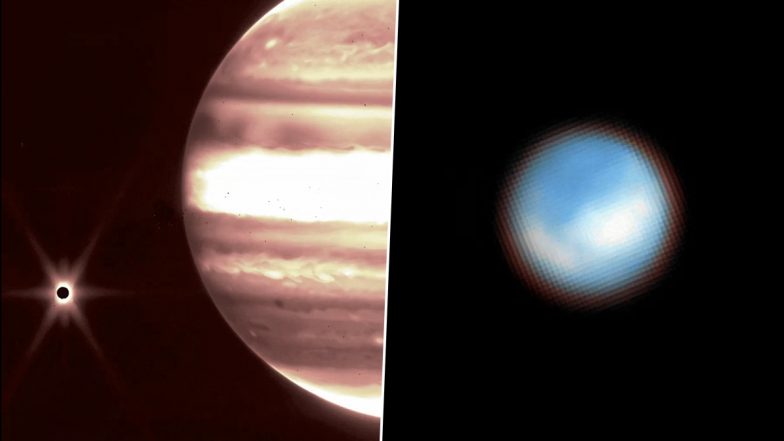NASA's James Webb Space Telescope has made a significant discovery by detecting carbon dioxide on the surface of Jupiter's moon Europa. The analysis suggests that this carbon dioxide likely originated from Europa's subsurface ocean and was not brought in by external sources. This finding raises intrigue about the ocean's chemistry and its potential to support life as we understand it. Scientists are now eager to delve deeper into understanding the ocean's chemistry, as it could hold key clues about the habitability of this intriguing celestial body. NASA Camera Onboard South Korean Orbiter Danuri Captures Lunar South Pole Region on Moon.
James Webb Space Telescope Detects Carbon on Europa
📢Breaking space news!
🧬The NASA/ESA/CSA James #Webb Space Telescope has detected carbon dioxide on the surface of Jupiter's icy moon Europa.
🌊 Analysis indicates that this carbon likely originated in Europa’s subsurface ocean and was not delivered by other external sources. pic.twitter.com/PlYXj8pCqD
— ESA (@esa) September 21, 2023
On the icy crust of Jupiter's moon Europa, Webb has discovered carbon dioxide that likely originated in the liquid water ocean below. Understanding the chemistry of this ocean could help determine if it is a good place for life as we know it: https://t.co/tGLrJrVsyl pic.twitter.com/4C4JjZMCBw
— NASA Webb Telescope (@NASAWebb) September 21, 2023
(SocialLY brings you all the latest breaking news, viral trends and information from social media world, including Twitter (X), Instagram and Youtube. The above post is embeded directly from the user's social media account and LatestLY Staff may not have modified or edited the content body. The views and facts appearing in the social media post do not reflect the opinions of LatestLY, also LatestLY does not assume any responsibility or liability for the same.)













 Quickly
Quickly





















